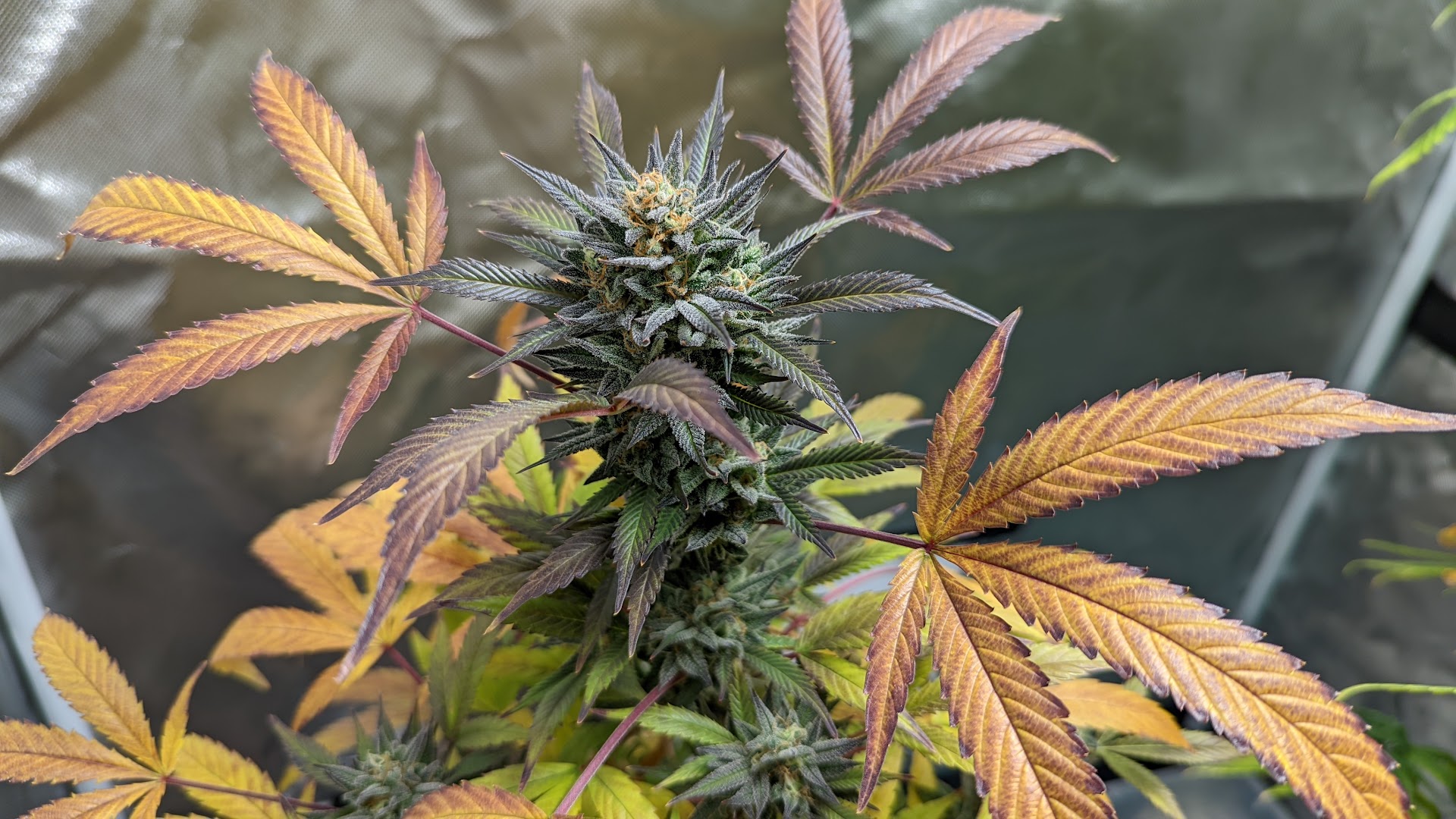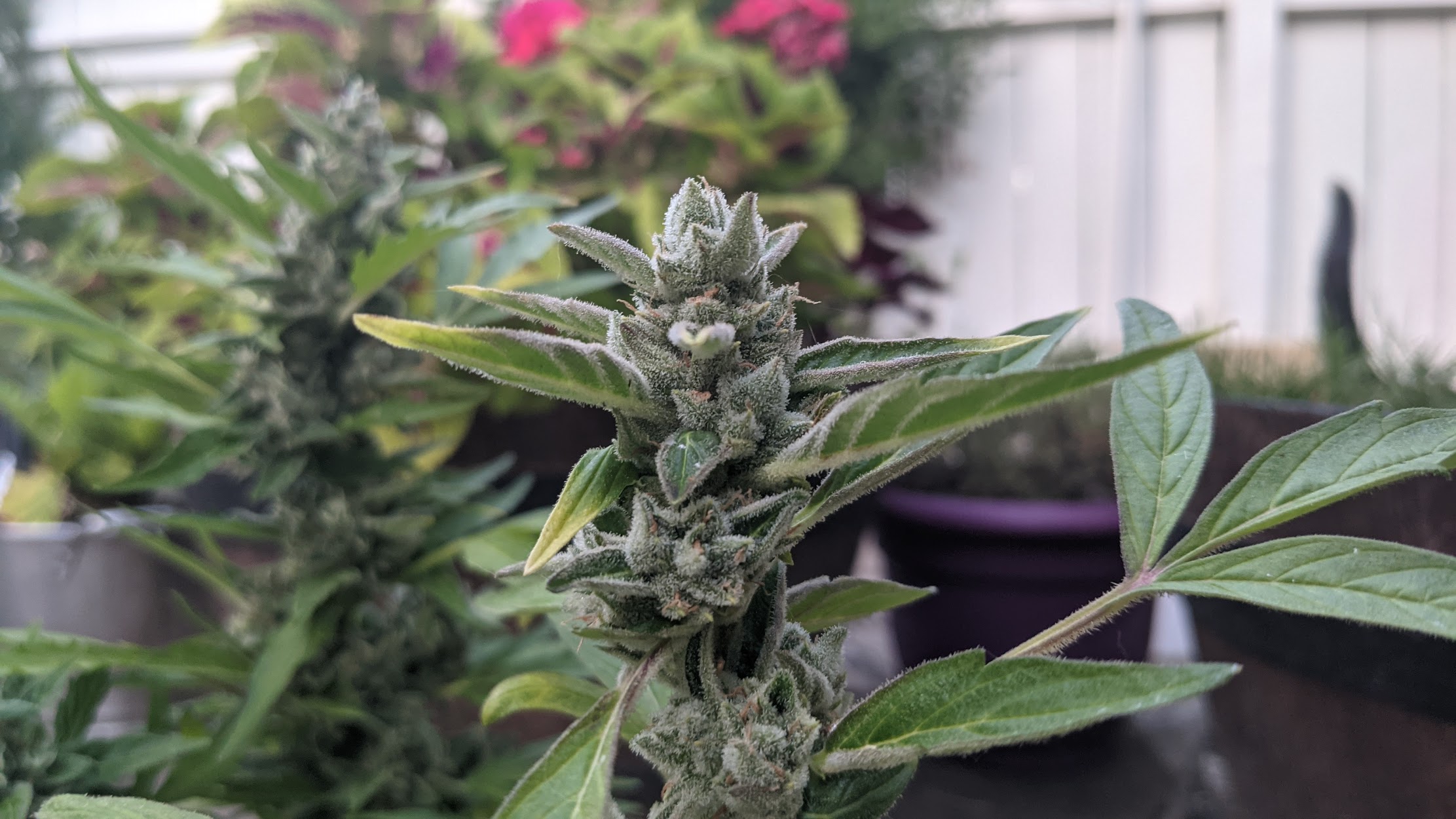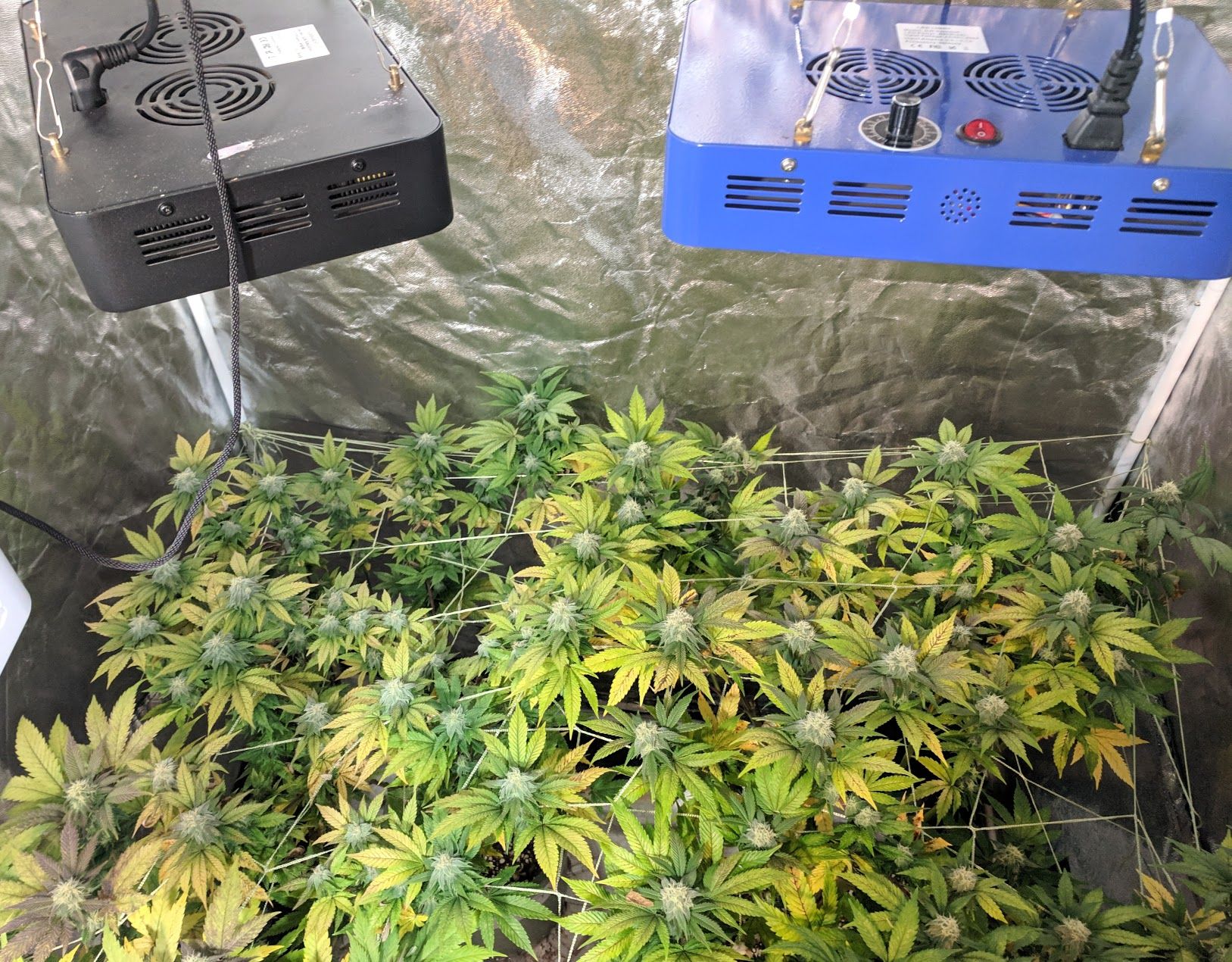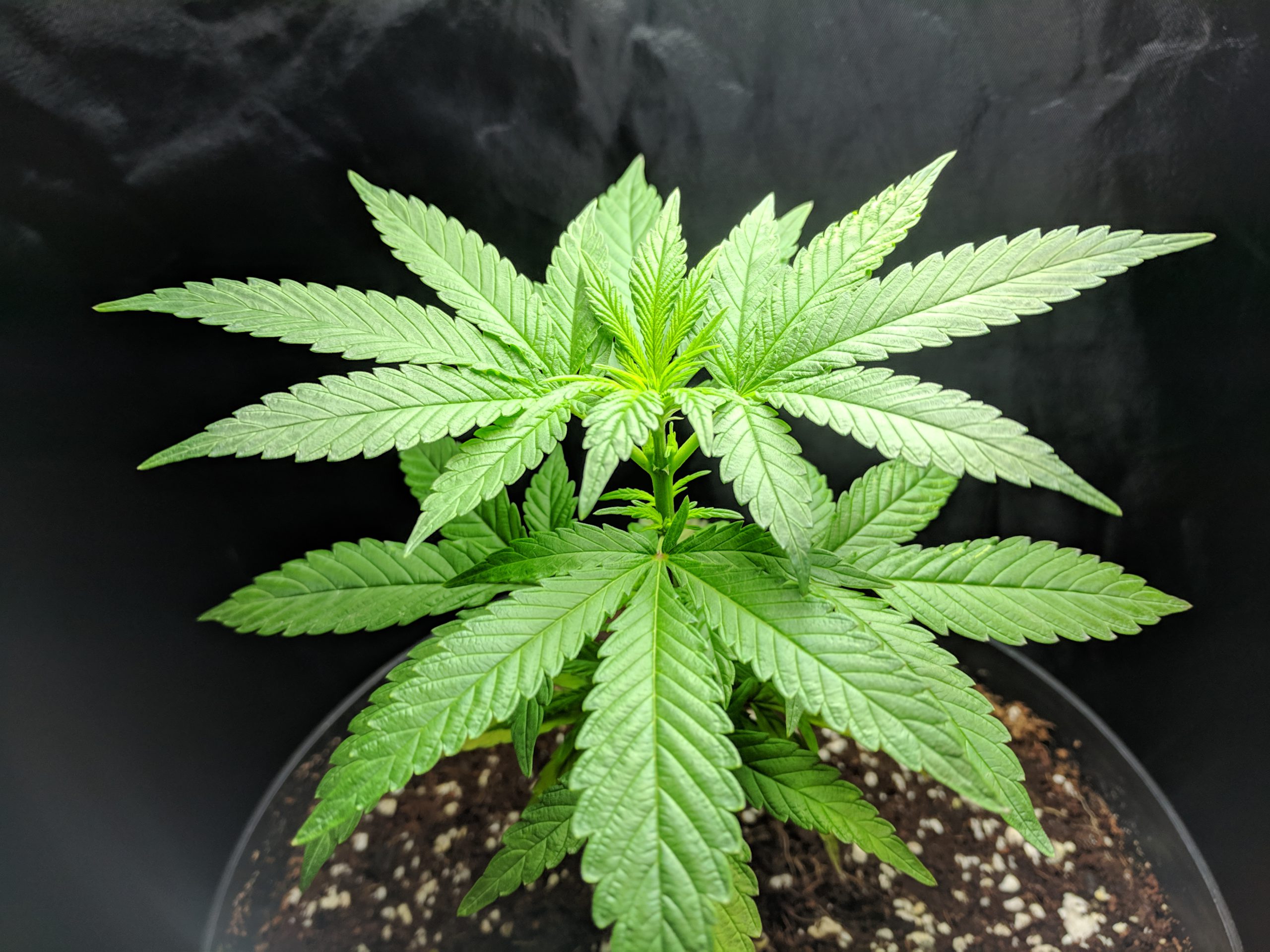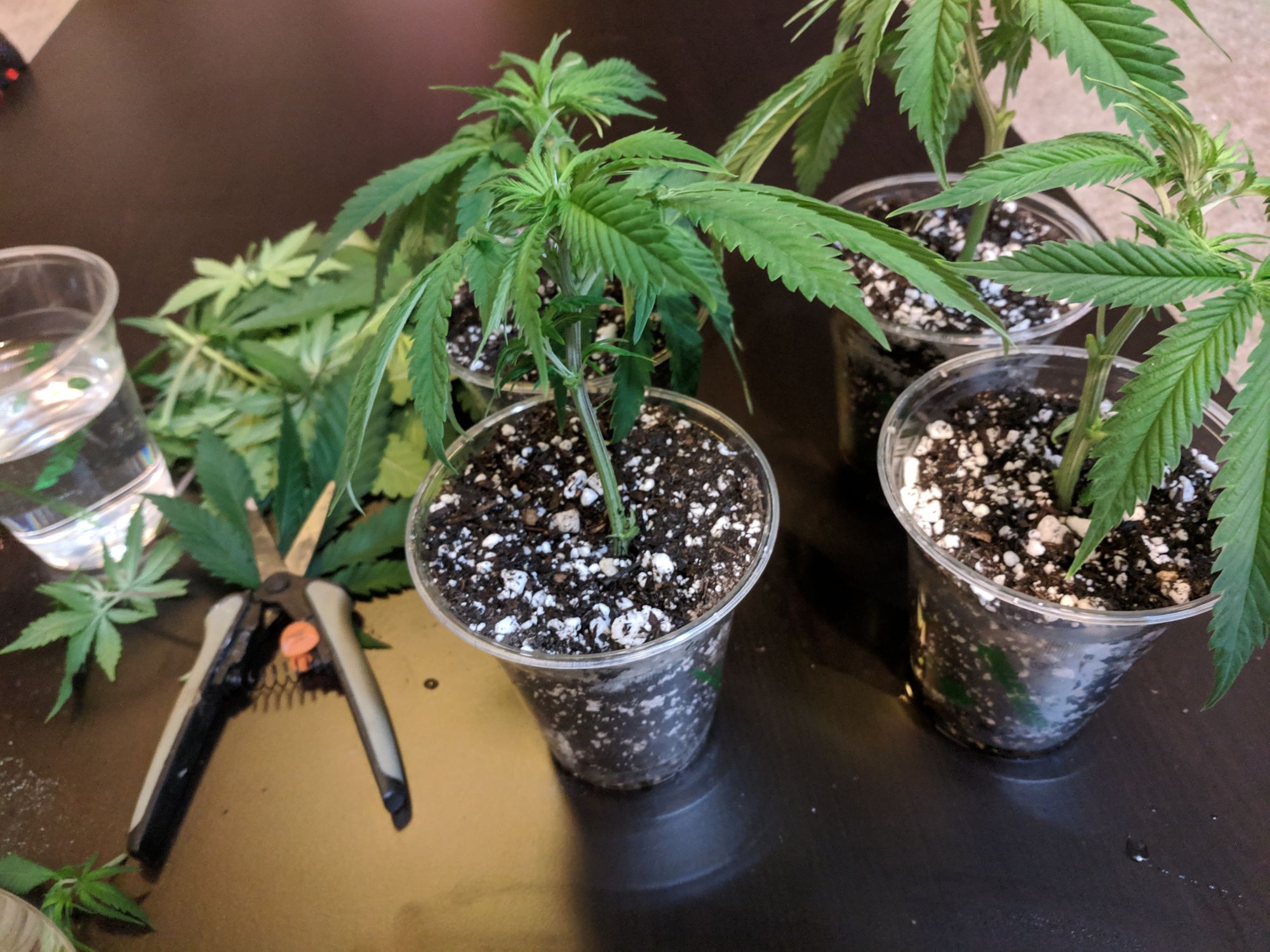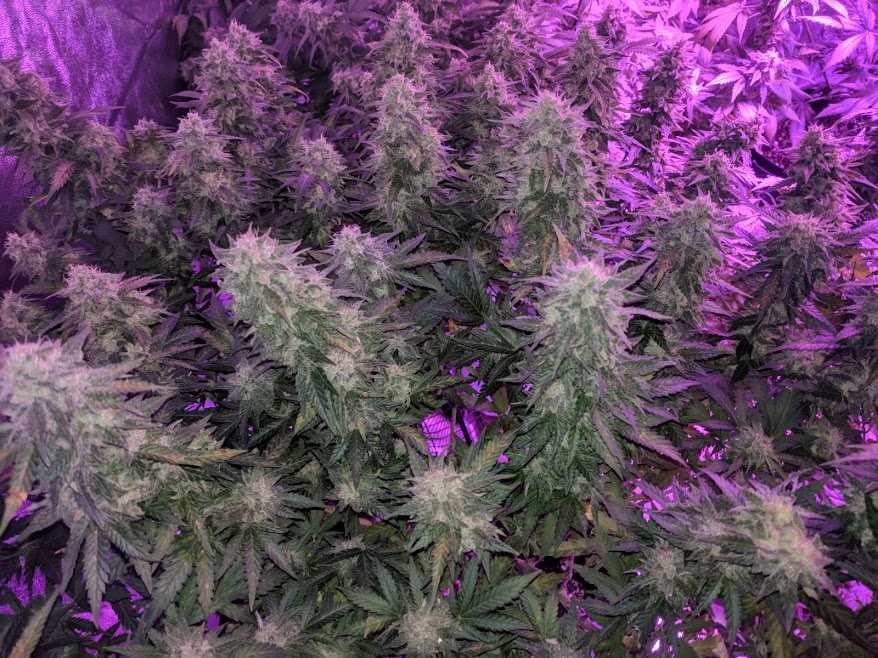In this guide, we’ll walk through the steps for topping your marijuana plants to improve yield. Apical dominance is a tendency, found in many plants, to put the majority of their energy into the top-most growth. In natural settings, it helps them reach precious sunlight in crowded environments. It’s also what gives cannabis its natural Christmas tree shape, with one large bud growing at the top (the cola) and much smaller buds on the side branches. The problem with this is that plants can grow very tall and the shape does not make good use of indoor lighting.

Since cannabis naturally puts most of its growth into the top cola due to apical dominance, If you want to control the height or spread growth energy, you need to alter this natural tendency. One way to break apical dominance would be to pull the growing tip down so that it’s no longer the top-most growth. This causes the plant to distribute energy more evenly across the side branches, as illustrated below.

What is topping?
Topping uses a different technique to accomplish this. Topping is simply the act of cutting or pinching off the main growth point with the goal of breaking the apical dominance and encouraging side branching. Repeating the process will encourage the plant to spread energy across even more bud sites. It will start to branch out and take on a bush form. We made this animated video to explain how topping and pruning are used to create a flat canopy for larger yields:
The final goal of topping in most cases is to get bushy growth that makes the best use of available light and space.

Why should I top?
Topping does take some effort and care, but in many cases it is the right move – especially for the indoor grower. The primary reasons to top your cannabis is for height control and increased yields.
Cannabis is too tall!
Many cannabis strains naturally grow taller than your ceiling – topping reduces vertical growth and encourages horizontal branching.
We want more bud!
If left to grow naturally, marijuana plants produce only one main cola – topping improves yield, since branching causes the plant to produce multiple large colas. Each cola won’t be as large as the single cola would have been, but the overall yield can be considerably larger.

Grow lights aren’t the sun!
Left to grow naturally, marijuana plants will take the shape of a Christmas tree. This shape works well with the sun, a large light source that’s far away. The entire exterior of the plant can be coated in sunlight. This doesn’t work as well with grow lights since penetration and power fall off rapidly from a small light source, leaving the bottom of the tree without enough light to fully develop. Topping and training your plant to have a flat canopy will make better use of indoor grow lights.

Should I always top?
There are a couple of circumstances where topping isn’t the best option:
You want one big bud: If you are looking to grow a single large bud for bragging rights and don’t mind an overall decreased yield, you shouldn’t top. For this, just let the plant keep its apical dominance to focus energy on the main cola.
You’re doing 12/12 from seed: If you’re skipping straight from seedling to flower, you won’t have time to top before it’s in flower, and you should never top a plant in flower.
You’re growing a fast auto-flower: Autoflowering plants are on a timer from germination to flowering, and many are specially tuned to have a very short vegetation stage. Since topping can be traumatic to the plant and slow growth, autos that mature in less than 90 days can be stunted and reduce production. For fast-autos, you should skip topping altogether. If you have some experience, you might try FIM’ing since it is less traumatic for the plant.
Step 1 – Break Apical Dominance
Count up five leaf nodes, and then cut or pinch the growth tip. Cutting the growth tip will cause the side branches to increase growth, balancing more evenly across the plant.

Step 2 – Repeat and Train for a Flat Canopy
Use low-stress training to pull down the highest growth tips continually. Keeping growth tips, horizontal growth spread evenly across the plant, while encouraging a flat canopy to make better use of indoor lighting. Visit the Low-Stress Training Guide and learn a technique to combine topping, training, and pruning to maximize yields.

Why do the stems change after topping?
In normal cannabis growth, the main stem is tapered all the way up, since the plant has a single primary channel to direct water and nutrients up the center of the plant towards the primary cola. After you top, the plant morphs to distribute water and nutrients to the side branches. The plant will need more nutrients and water to support two colas, so the plant will beef up the stem joints significantly, developing bulges, or knuckles, at the joints. This morphing action allows the cannabis plant to direct the additional nutrients and water to side branches, ultimately swelling the buds to create multiple colas.

When do I top?
Top after the plant is a few weeks old and has at least five leaf nodes. Only top when the plant is in the vegetative stage – do not top when plants after they have transitioned to flower.
Where do I cut to top?
Count up five nodes and cut the growth tip just above the 5th node, like in the illustration below. You can also cut after the 6th or 7th node if you want, but you should not cut before the 4th node or the plant may not recover.

What’s the difference between topping and FIM’ing?
FIM stands for ‘Fuck, I missed’ and is similar to topping, except rather than cut below the growth tip, you pinch the actual growth tip itself. While topping causes the plant to branch in two, FIM can create 2-4 branches. While FIM’ing is less traumatic and can lead to even better results, it isn’t as reliable as a topping and can result in no branching.

What should I use to cut?
Any sharp scissors or small pruning shears will do. Make sure that you clean and sterilize the blades so the plant can heal quickly. We like this set by Vivosun, because they are super sharp and super cheap.
Where do I pinch to FiM?
After the plant has grown at least five modes, pinch the growth tip as shown in the illustration below.

Can I top or FIM Side Branches?
Yes. Cutting or pinching side branches will cause them to fork just like it does to the cola. The overall effect will be a bushier plant with even more bud sites. This is an important part of training to a flat canopy, since you want the side branches will catch up to the top in height.
How do I top or FIM multiple times?
Topping is a continuous process while the plant is in vegetation. After the branches or any growth tip has at least four nodes, just cut or pinch off the growth tip to create a new branch. Only take a few each day, so the plant doesn’t go into shock.
Visit the Low-Stress Training Guide and learn a technique to combine topping, training, and pruning to maximize yields.

These LSD plant (left) and Acapulco Gold (right) – both strains by seed breeder Barney’s Farm – have been topped multiple times, and were trained to produce a flat canopy with many large colas each. These plants produced 6 ounces each of high-quality bud after 60 days vegging and 65 days of flowering. Learn how to do this yourself in our Low-Stress Training Guide.
